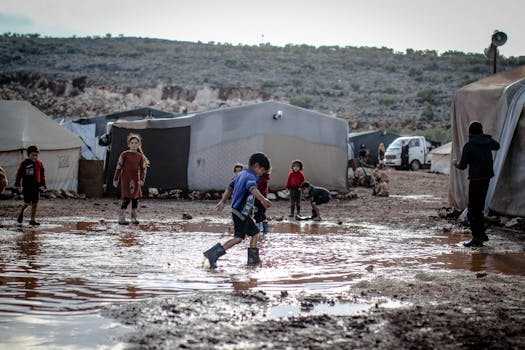
**
The global economy is teetering on a precipice. While some sectors show signs of resilience, underlying vulnerabilities are creating a fragile landscape demanding careful navigation. From persistent inflation and the looming threat of recession to geopolitical instability and supply chain disruptions, the challenges are numerous and interconnected. This article delves into the key factors contributing to this fragility, explores potential risks, and examines strategies for mitigation.
Navigating the Inflationary Storm: A Global Challenge
Inflation remains a dominant concern worldwide. High energy prices, exacerbated by the war in Ukraine and supply chain bottlenecks, continue to fuel consumer price increases. Central banks across the globe are responding with aggressive interest rate hikes, aiming to curb inflation but risking a hard landing – a sharp economic slowdown or recession. The inflation rate is a key indicator closely monitored by economists and policymakers alike. Many countries are grappling with stagflation, a toxic combination of slow economic growth, high unemployment, and persistent inflation.
The Impact of Rising Interest Rates
The Federal Reserve's (Fed) aggressive interest rate hikes in the US, and similar actions by other central banks, aim to cool down overheated economies. However, these hikes increase borrowing costs for businesses and consumers, potentially stifling investment and spending. This is particularly concerning for developing economies, which often have higher levels of external debt and are more vulnerable to capital flight. The interest rate hike impact is rippling across global markets, leading to increased market volatility.
Recessionary Fears Loom Large: A Global Slowdown?
The threat of a global recession is palpable. Leading indicators, including declining consumer confidence, weakening manufacturing activity, and shrinking trade volumes, are painting a gloomy picture. The global recession risk is amplified by the interconnectedness of the world economy; a significant slowdown in one major economy can trigger a domino effect. Many economists are predicting a global economic slowdown in 2024, with some forecasting a recession in major economies.
Sectoral Impacts and Vulnerability
The potential for a recession isn't uniform across all sectors. Energy prices and supply chain disruptions disproportionately impact manufacturing and transportation. The technology sector is grappling with reduced investment and a decline in consumer spending on non-essential goods. The recession impact varies significantly across industries, with some more vulnerable than others.
Geopolitical Instability: Adding Fuel to the Fire
Geopolitical tensions are further destabilizing the global economy. The war in Ukraine has sent shockwaves through energy markets, impacting food security, and disrupting global trade flows. Rising tensions between major powers add uncertainty, increasing the risk of further disruptions to supply chains and investment flows. The geopolitical risk is a significant factor contributing to economic fragility.
Supply Chain Disruptions and Energy Security Concerns
The ongoing disruptions to global supply chains, further exacerbated by geopolitical factors, are contributing to inflation and hindering economic growth. Energy security concerns, particularly in Europe, add another layer of complexity, highlighting the vulnerability of heavily interconnected economies. Diversification of supply chains and investment in renewable energy sources are crucial steps towards increased resilience.
Emerging Market Vulnerabilities: A Critical Focus
Emerging market economies are particularly vulnerable to the current global economic headwinds. They often rely heavily on exports, making them susceptible to reduced global demand. High levels of external debt and dependence on foreign investment make them vulnerable to capital flight and financial instability. Emerging market debt is a key area of concern, as rising interest rates increase borrowing costs and the risk of default.
Strategies for Mitigation and Resilience
To navigate this challenging economic landscape, policymakers and businesses must adopt a multifaceted approach:
- Targeted Fiscal Policies: Governments need to implement fiscal policies that support vulnerable households and businesses while avoiding excessive government spending that could fuel inflation.
- Monetary Policy Coordination: Central banks need to coordinate their monetary policy actions to avoid destabilizing the global financial system.
- Supply Chain Diversification: Businesses need to diversify their supply chains to reduce their vulnerability to disruptions.
- Investment in Renewable Energy: Investment in renewable energy sources is crucial to reduce dependence on volatile fossil fuel markets.
- Strengthening International Cooperation: Increased international cooperation is essential to address global challenges, such as climate change and pandemic preparedness.
Conclusion: A Call for Prudence and Collaboration
The global economy is undeniably fragile. The interplay of inflation, recessionary risks, and geopolitical uncertainty creates a complex and volatile environment. Navigating this challenging landscape requires a cautious approach, careful policymaking, and strong international cooperation. Proactive measures to mitigate risks, strengthen resilience, and foster stability are crucial to prevent a more severe downturn and secure a more sustainable and equitable future. The world needs to handle the global economy with care, understanding that collaborative efforts are paramount in averting significant economic hardship.




















